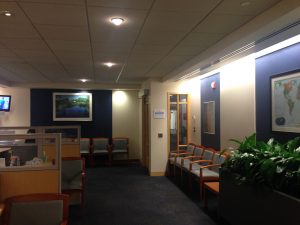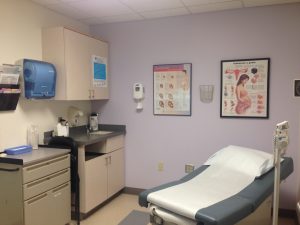Childhood sexual abuse (CSA) is a prevalent occurrence that can have many profound and lasting effects for survivors. Unfortunately, it is often overlooked by healthcare providers. Though awareness of CSA has increased dramatically in the reproductive health world over the last twenty years or so, many providers still do not incorporate evidence into their practice. An especially overlooked facet of this care is the environment and how it can be either a healing or triggering. The overarching aim of this project was to explore how prenatal care spaces can be trauma informed, and to start conversations about this relatively uncharted concept.
 My project, titled “Creating a Trauma Informed Care Environment for Pregnant Patients,” has illuminated many unique opportunities and cross disciplinary perspectives. My project is centered on an interview with a survivor of CSA about her experience during pregnancy and childbirth. Key informant interviews with architects, architecture designers, and trauma informed midwife researchers supplement the case study interview.
My project, titled “Creating a Trauma Informed Care Environment for Pregnant Patients,” has illuminated many unique opportunities and cross disciplinary perspectives. My project is centered on an interview with a survivor of CSA about her experience during pregnancy and childbirth. Key informant interviews with architects, architecture designers, and trauma informed midwife researchers supplement the case study interview.
I found that near the beginning of interviews, it was difficult for to get specific information about the outpatient environment. It took some time for the midwife researchers and the survivor of CSA to center their conversation around the environment and how it can be trauma informed. It was a part of the survivor’s prenatal experience that was influential, however it was hard to isolate from office visits in their entirety as the environment was the backdrop for many other interactions. For the midwife researchers, direct patient care has been the centerpiece of their work. Again, the environment has been more of a subconscious aspect of their experiences as providers. Once the conversation warmed up, things started clicking and I was able to gather very thoughtful insights that have been valuable for my analysis.
 Speaking with the architects and architecture designers was an entirely different situation. It forced me to change my mindset as an interviewer. While my background is working directly with patients, the environment is their area of expertise. The architecture designers had just finished an in depth look at how to design spaces in a trauma informed way for survivors of torture. The breadth of this work was impressive, and I was lucky enough to hear about unique architecture concepts and how they specifically apply to trauma informed environments. Unfortunately, information available about trauma and the environment is scarce, so this conversation was truly vital to my project.
Speaking with the architects and architecture designers was an entirely different situation. It forced me to change my mindset as an interviewer. While my background is working directly with patients, the environment is their area of expertise. The architecture designers had just finished an in depth look at how to design spaces in a trauma informed way for survivors of torture. The breadth of this work was impressive, and I was lucky enough to hear about unique architecture concepts and how they specifically apply to trauma informed environments. Unfortunately, information available about trauma and the environment is scarce, so this conversation was truly vital to my project.
I have created a handout for pregnancy providers to guide them in creating a more trauma informed environment for their patients. I am hopeful that by sharing the wide range of expertise from my interviews, conversations will start to happen and the move toward trauma informed care will happen.
